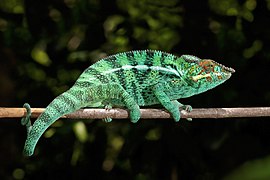Main Page
|
Welcome to The free species directory that anyone can edit. It covers Animalia, Plantae, Fungi, Bacteria, Archaea, Protista and all other forms of life. So far we have 874,037 articles Wikispecies is free, because life is in the public domain! You can also check us out on Twitter: @Wikispecies We also have an IRC Channel #wikispeciesconnect |
Taxon Navigation
|
Explore Wikispecies
Collaboration with ZooKeys A collaboration between Wikispecies and ZooKeys has been announced. PhytoKeys also joined the collaboration in November 2010. Images of species from ZooKeys and PhytoKeys will be uploaded to Wikimedia Commons and used in Wikispecies.
Distinguished author Georges Cuvier Georges Léopold Chrétien Frédéric Dagobert Cuvier (most often published simply as "Georges Cuvier") was a French naturalist and zoologist. He is sometimes referred to as the founding father of paleontology. Cuvier was a major figure in natural sciences research in the early 19th century and was instrumental in establishing the fields of comparative anatomy and paleontology through his work in comparing living animals with fossils. Cuvier's work is considered the foundation of vertebrate paleontology, and he expanded Linnaean taxonomy by grouping classes into phyla and incorporating both fossils and living species into the classification. Cuvier is also known for establishing extinction as a fact: at the time, extinction was considered by many of Cuvier's contemporaries to be merely controversial speculation. He is also remembered for strongly opposing theories of evolution, which at the time (before Darwin's theory) were mainly proposed by Jean-Baptiste Lamarck and Étienne Geoffroy Saint-Hilaire. Cuvier believed there was no evidence for evolution, but rather evidence for cyclical creations and destructions of life forms by global extinction events such as deluges (outburst flooding). Cuvier wrote hundreds of scientific papers and books. His most famous work is Le Règne Animal (1816–1817, four tomes; English title The Animal Kingdom). It sets out to describe the natural structure of the whole of the animal kingdom based on comparative anatomy, and its natural history. Cuvier divided the animals into four embranchements ("Branches", roughly corresponding to phyla), namely vertebrates, molluscs, articulated animals (arthropods and annelids), and zoophytes (cnidaria and other phyla). He is the author of thousands of new taxa, among them well over 5,000 species of fish and molluscs. In 1800 and working only from a drawing, Cuvier was the first to correctly identify in print, a fossil found in Bavaria as a small flying reptile, which he named the Ptero-Dactyle in 1809 (later Latinized as Pterodactylus antiquus). When the French Academy was preparing its first dictionary, it defined "crab" as "A small red fish which walks backwards." This definition was sent with a number of others to the naturalist Cuvier for his approval. The scientist wrote back: "Your definition, gentlemen, would be perfect, only for three exceptions. The crab is not a fish, it is not red, and it does not walk backwards." In 1819, he was created a peer for life in honour of his scientific contributions and is thereafter known as Baron Cuvier. See also: Distinguished authors of previous months. |
|
Wikispecies is hosted by the non-profit Wikimedia Foundation, along with several other multilingual and free-content projects:
|









